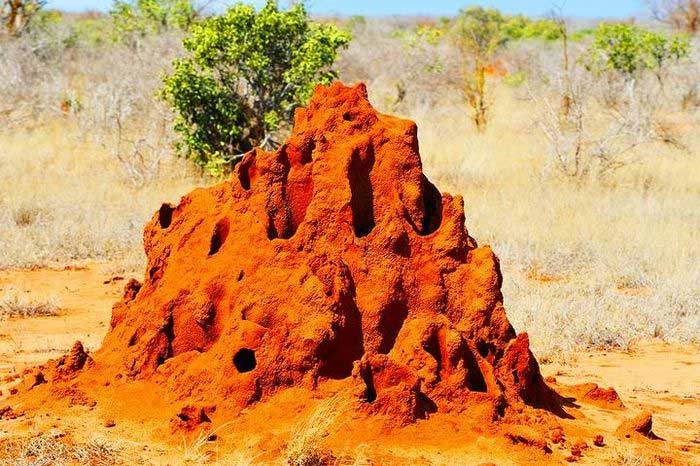NASA astronauts involved in the Artemis program may utilize temporary shelters constructed by a swarm of robots, inspired by termite mounds.
A team of engineers from the University of Arizona has drawn inspiration from giant termite mounds to develop a concept for a new habitat on the Moon. A press release revealed that this innovative idea could ultimately be used on the Moon, as NASA aims to establish a lunar base by the end of this decade.

Giant termite mound. (Photo: Tarangire National Park).
This design will enable astronauts to quickly deploy a temporary shelter, keeping them safe from the harsh conditions of the Moon while planning for the construction of a more permanent settlement. Furthermore, this termite mound-inspired structure will be automatically deployed by a network of specialized robots designed based on termite systems.
Associate Professor Jekan Thanga and his students at the Department of Aerospace and Mechanical Engineering at the University of Arizona have simulated a prototype of the termite mound habitat using specially designed sandbags that can be filled with regolith, soil, and mineral fragments from the lunar surface, eliminating the need for traditional building materials.
Jekan Thanga looked to the natural world and drew design ideas from termite mounds found in churches in Africa and Australia. Thanga explained: “In the case of termite mounds, it is very relevant to the challenges beyond our world. The harsh desert environment that termites face is similar to conditions on the Moon. Importantly, this entire approach does not rely on water. Much of the Moon is a barren desert.”
Thanga’s team is collaborating with NASA’s Jet Propulsion Laboratory at Caltech and MDA, a space robotics company, to establish a specialized robotic swarm named LUNAR-BRIC, inspired by termites. This robotic network will autonomously construct the lunar termite mound houses, requiring no human intervention, allowing astronauts to focus on other missions.
Currently, NASA has awarded Thanga’s team $500,000 for lunar surface projects through the Artemis Space Technology Research Program, also known as M-STAR.


















































